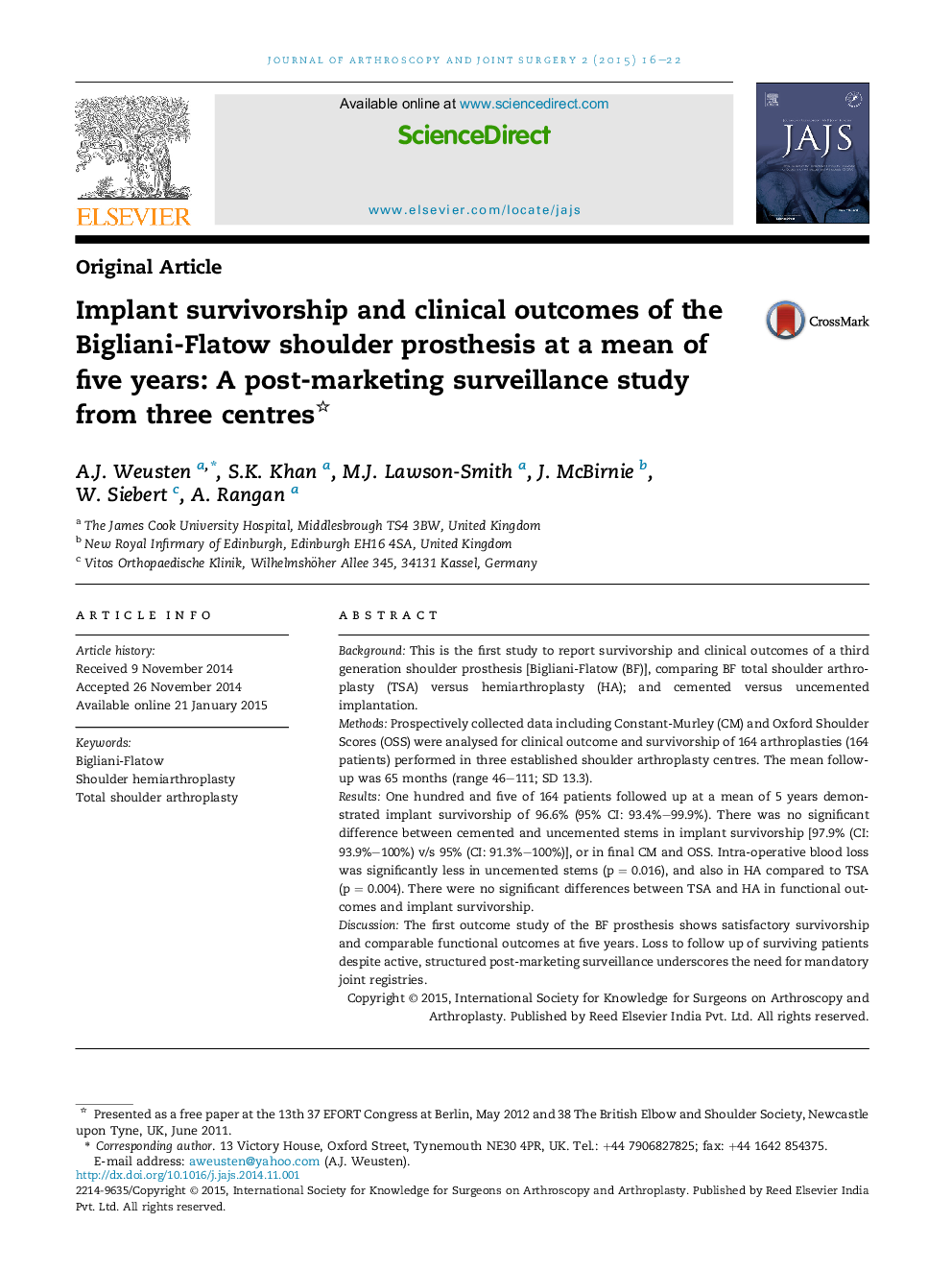| Article ID | Journal | Published Year | Pages | File Type |
|---|---|---|---|---|
| 3245123 | Journal of Arthroscopy and Joint Surgery | 2015 | 7 Pages |
BackgroundThis is the first study to report survivorship and clinical outcomes of a third generation shoulder prosthesis [Bigliani-Flatow (BF)], comparing BF total shoulder arthroplasty (TSA) versus hemiarthroplasty (HA); and cemented versus uncemented implantation.MethodsProspectively collected data including Constant-Murley (CM) and Oxford Shoulder Scores (OSS) were analysed for clinical outcome and survivorship of 164 arthroplasties (164 patients) performed in three established shoulder arthroplasty centres. The mean follow-up was 65 months (range 46–111; SD 13.3).ResultsOne hundred and five of 164 patients followed up at a mean of 5 years demonstrated implant survivorship of 96.6% (95% CI: 93.4%–99.9%). There was no significant difference between cemented and uncemented stems in implant survivorship [97.9% (CI: 93.9%–100%) v/s 95% (CI: 91.3%–100%)], or in final CM and OSS. Intra-operative blood loss was significantly less in uncemented stems (p = 0.016), and also in HA compared to TSA (p = 0.004). There were no significant differences between TSA and HA in functional outcomes and implant survivorship.DiscussionThe first outcome study of the BF prosthesis shows satisfactory survivorship and comparable functional outcomes at five years. Loss to follow up of surviving patients despite active, structured post-marketing surveillance underscores the need for mandatory joint registries.
